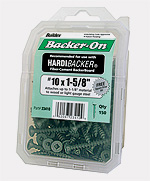ErnieMccracken
New Member
I chose from the Armstrong Lumex Plus line for my "pet room." Never done any type of flooring before, but want to give it a shot. Here is the plan after some basic research. Look ok? Any tips that you wish you knew before your first install?
1) Out with the old- Pull existing carpet up and remove trim. Remove all old hardware and clean as needed. Done.
2) Prep for new- Existing OSB Subfloor (house built in '94) now sits 0.7" below adjacent wood flooring and needs to be built up. Plan is to lay down 0.5" plywood to close the gap. Run it perpendicular to joists. Secure with 1" deck screws every 4"-6" apart? Leave 1/8" gaps at every intersection?
3) Make it flat- Use a leveling compound? Can I use a small amount just to raise the couple obvious low spots or do I need to coat the entire surface?
4) New Floor- Install new vinyl with 1/8" expansion gaps around the perimeter. Glue down (loose lay seems to have a bad rep).
5) Finish work- Reinstall old molding. Add new shoe molding. Nail into the walls, not through the vinyl. Any advice on a transition strip that I need to bridge the remaining 0.1" gap to my wood floor?
1) Out with the old- Pull existing carpet up and remove trim. Remove all old hardware and clean as needed. Done.
2) Prep for new- Existing OSB Subfloor (house built in '94) now sits 0.7" below adjacent wood flooring and needs to be built up. Plan is to lay down 0.5" plywood to close the gap. Run it perpendicular to joists. Secure with 1" deck screws every 4"-6" apart? Leave 1/8" gaps at every intersection?
3) Make it flat- Use a leveling compound? Can I use a small amount just to raise the couple obvious low spots or do I need to coat the entire surface?
4) New Floor- Install new vinyl with 1/8" expansion gaps around the perimeter. Glue down (loose lay seems to have a bad rep).
5) Finish work- Reinstall old molding. Add new shoe molding. Nail into the walls, not through the vinyl. Any advice on a transition strip that I need to bridge the remaining 0.1" gap to my wood floor?






